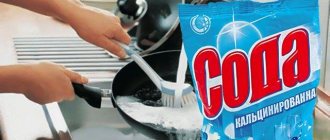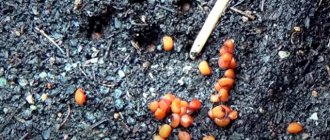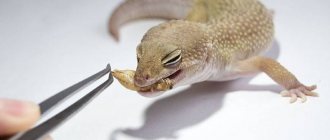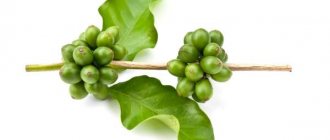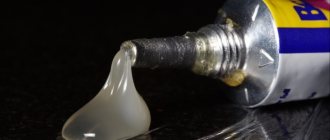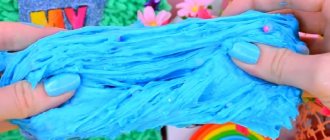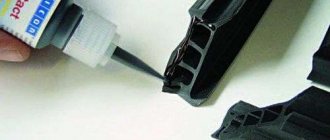Some housewives prefer to “pamper” family members or guests with original homemade confectionery delights on holidays. At the same time, they try to decorate cakes, cupcakes or gingerbread cookies with decorative elements. Food grade glue ensures their reliable fixation to the product.
Edible glue
But using it in its finished industrial form is quite expensive. Since it has a fairly “decent” price. Therefore, most home craftswomen try to prepare such an adhesive composition at home.
Main components
Edible glue is distinguished by the fact that it is created on the basis of natural ingredients that are harmless to the human body. The industrial fixative most often includes:
- water;
- citric or acetic acid as a preservative;
- additive E466 - sodium carboxymethylcellulose, which can add viscosity to the mixture;
- potassium sorbate.
The release form can be of two types - liquid or powder. The first one can be used immediately; the powder one requires time to prepare. Today there are many recipes based on which you can make food glue from ordinary products at home. For this you will need:
- chicken egg whites;
- white or dark chocolate;
- lemon acid;
- flour;
- powdered sugar;
- sugar syrup.
The glue is easy to prepare, it sets quickly and can easily withstand temperature changes. You should not prepare the mass in large quantities, since its consumption is economical.
Magic Colors
Magic Colors brand edible glue is a thick mass, ready for use. The components it consists of are of plant origin. The liquid has good fluidity and density. The adhesion of the components is strong, so glue is often used to connect elements made of mastic and marzipan figures.
The mixture is applied to the surfaces to be glued together, and after some time their fastening becomes reliable. Edible glue is very useful if small elements on the cake have been damaged. It's easy to fix the situation with Magic Colors, with just one touch of the brush. The composition will help if the cook is faced with the task of combining rather massive mastic decorations.
Rainbow edible glue
The food glue of this brand is based on carboxymethylcellulose. It is obtained from caustic soda and cellulose. The substance is tasteless and odorless. Used to thicken and obtain viscosity. Rainbow edible glue is often used by professional pastry chefs to create designer pastries and wedding cakes.
It is not an allergenic product; no reactions of this type have been observed. Vegetarians can eat products using this glue, since the composition does not contain components of animal origin. Rainbow edible glue is produced in the UK. You can buy it in plastic containers of 25 or 50 grams.
QFC Essentials Edible Glue
English brand cooking glue has an edible “sugar” composition. It is ideal for preparing culinary mastic, from which flowers, decorations, and figurines are made. Its high adhesive ability helps to hold heavy dessert decorative elements. The QFC Essentials composition sets quickly and is resistant to temperature changes. Edible glue has the appearance of a colorless viscous liquid. Packaged in plastic containers of 18 grams.
What is KMC thickener?
CMC (Carboxymethylcellulose, CMC). A food thickener used to prepare sugar mastic, to change its viscosity, as well as to prepare food glue. With the CMC thickener it is easy to make a thicker (harder) elastic mastic, which will be good for sculpting figures or flowers.
Interesting materials:
How many kilograms of oyster mushrooms can be collected from one block? How many kilocalories are there in 100 g of butter? How many kilocalories are there in 100 g of boiled rice? How many kilocalories are in 200 g of rice? How many kilometers from Batumi to Tbilisi? How many kilometers does a truck driver drive per day? How many kilowatts are in one gigacalorie? How many kilowatts are allocated for a house in St. How many kcal are in 1 Bounty bar? How many kcal are in 1 soft-boiled egg?
How to make your own tile adhesive?
For interior work in a house or apartment, where complex mixtures for laying tiles are not required, you can use a solution prepared yourself. Materials you will need:
- fresh cement grade not lower than 300 – 1 part;
- fine-grained sifted sand - 5 parts;
- water - on request;
- plasticizer – 1/25 part.
PVA glue, slaked lime, silicate glue or liquid soap are suitable as a plasticizer. First, cement and sand are mixed, then the mixture is brought to the desired plastic consistency with water. At the last stage, when all the lumps disappear, add any of the plasticizers.
Beginners should know that the solution prepared from the dry mixture must be used as quickly as possible, but without haste. You cannot leave the glue on the next day - even if it does not completely harden, its beneficial properties will be lost.
Possible side effects
There are secrets in the preparation and use of mastic jewelry, knowledge of which allows you to prevent an unexpected final result:
- the powdered sugar used to make mastic is prepared carefully and ground very finely, otherwise the layer will tear when rolled out;
- mastic cannot be applied to a raw cake (sour cream, impregnation), since it can dissolve upon contact with moisture;
- Before applying mastic to the butter cream, the dessert is placed in the refrigerator so that the cream hardens well;
- small decorative details can be glued by moistening them with water or egg white with powdered sugar;
- if you glue the figures and put the cake in the refrigerator, they can absorb moisture and fall off, so the decor is attached before serving the dessert;
- details made from marshmallows can be painted with food coloring;
- when the mastic cools, it loses its elasticity, which can be restored by placing the decorative material in a microwave oven or a heated oven;
- the remaining mastic is stored in the freezer - up to two months or two weeks on the refrigerator shelf;
- Dried but unused figures are placed in a box and stored for 1.5 months.
Rules for working with adhesive composition
Advice for novice pastry chefs from more experienced comrades:
- Mastic products must be prepared long before assembling the cake. This way you can check how they behave on dessert.
- Each decorative element should be dried separately from the rest so that they do not stick together.
- Small parts can be joined with plain water. Just moisten the elements and fix on the cake.
- Edible glue will help secure large parts.
- Confectionery glue made from egg whites is applied to the product using a pastry syringe or brush.
- When decorating, it is advisable to wear gloves and use tweezers to grab parts. This way you won't damage the small parts.
The confectionery fixative is applied to the decorative element and to the surface to be fixed. They do not connect immediately, but after 1–2 minutes.
Interesting video on the topic:
How to get the right taste and consistency
The pastry glue should have a neutral taste and smell so as not to overwhelm the main dish. A fixative that is too thick or liquid, or a composition with lumps will not provide a reliable connection and will spoil the appearance of the product.
Little things that affect taste and consistency:
- Sometimes the powdered sugar clumps together, forming one big lump. Take the time to crush it as finely as possible. Otherwise, the mastic will tear when rolling.
- Do not apply the pastry mixture to the soaked cake layer, only to the dry cake layer. The glue may dissolve due to the large amount of sugar.
- If you are using buttercream, let it cool thoroughly in the refrigerator before applying the mastic.
- Decorate the cake shortly before serving, otherwise the figures will get wet and stop holding their shape.
- If some elements dry out while decorating the cake, place them in the microwave for a few seconds. This will return them to their previous state.
Mastic can be stored in the freezer for up to two months, and in the refrigerator for no more than two weeks.
For plastic
The instructions for performing the work are as follows: to prepare heat-resistant food glue, SMS will need to be diluted in water in a ratio of 1:30 or, in rare cases, 1:45. The optimal container for this is a bottle with a lid. It is easy to achieve thorough mixing of all components of the composition.
At the first couple of times, the glue for food grade plastic will not be homogeneous, since the thickener may form lumps. They will disappear after a few hours, and the resulting solution will take on the appearance of a transparent substance.
If the adhesive is too dense, it can be diluted with plain water. The video below explains in detail how to make an adhesive for plastic.
What is conductive adhesive and in what cases is it advisable to use it?
In everyday life, there is often a need to connect several parts together without using a drill. And sometimes an additional condition is the high electrical conductivity of the connection. In such cases, conductive glue is used.
It is widely used in the creation of electronic devices for attaching various elements to an integrated circuit. It is also an indispensable element in the automotive industry for fastening and sealing wiring.
But if desired, it can be made at home from readily available materials.
How to make glue with your own hands - basic methods
- 1. Buy any quick-drying glue or special varnish at the supermarket.
- 2. Take a simple pencil with a rod hardness of M4 or M2, remove the graphite from it and grind it into fine dust in any convenient way.
- 3. Without opening the tube cap, carefully unscrew the foil from the bottom and align it.
- 4. Through the hole that appears, pour graphite dust into a tube of glue and mix everything thoroughly until a homogeneous mass is formed.
- 5. Wrap the foil back and press it tightly to ensure the interior is completely sealed.
As you can see from the step-by-step instructions, the method is incredibly simple, fast and cheap. This will create an adhesive that is quite suitable for solving everyday problems. The only negative is that it cannot be used on painted metal surfaces. This conductive adhesive is suitable for glass, linoleum and other materials.
There is a more expensive and complex method of preparing the material:
- At a chemical store we purchase silver nitrate or ordinary nitric acid with a capacity of no more than 10 milliliters.
- At a pharmacy or clinic we purchase a 1% formaldehyde solution and ammonia.
- Next, we combine all three substances in equal parts and observe a violent chemical reaction, as a result of which a silver precipitate is formed.
- We isolate the precipitate from the solution using filtration and distilled water.
- We heat the resulting precipitate for several minutes at a temperature of 100-150 degrees Celsius to evaporate excess liquid.
- Next, you need to add a few drops of ethyl alcohol to the resulting black powder, and then mix the substance with quick-drying glue, in the same way as described in the first preparation method.
This method will require a lot of effort, time and finances. But the result will be better. This conductive adhesive is also suitable for cables and other complex electronic elements.
According to its characteristics, it will actually repeat the factory product. Self-production of materials is usually resorted to by people who like to do things with their own hands.
For everyone else, it will be easier to buy a professional composition and not worry about its quality.
Properties of conductive adhesive composition
- — dry instantly so that the high pace of the master’s work is not lost;
- - have sufficient viscosity so as not to spread over the entire surface of the treatment, but remain in a clearly defined area of responsibility;
- — have good adhesion to any material and substance;
- — have a high level of electrical resistance;
- — meet environmental safety standards;
- - have thermal stability, since soldering is often used on microcircuits, and they also heat up during operation.
Types of glue
Another conductive adhesive, DoneDeal, works on a slightly different principle. The delivery set includes two special syringes, one of which contains the glue itself, and the other contains conductive paste.
During operation, they are mixed, and the paste is applied to the contact, and the top is sealed with glue. This significantly increases the conductive properties and ensures reliable fixation of the product. According to many, this model is currently the best on the market.
Its only drawback is that it dries quickly after opening the tube.
It is not worth buying a large package, because the product quickly hardens after opening, and you will still have to purchase a new tube for the next repair.
It is no longer possible to dilute dried glue without compromising its technical characteristics, so it is better to immediately discard this idea.
A link to promplace.ru is required
Cooking methods
Some formulations are prepared by simply mixing the ingredients. Others require heating, cooking or long-term aging of substances to dissolve in each other. In any case, it is important to strictly observe the proportions of the components, otherwise the finished homemade glue may not be of good enough quality.
Wallpaper glue made from flour
Of course, buying ready-made wallpaper glue is much easier. But sometimes it happens that it ends at the wrong moment, and it is quite possible to re-glue the material with a paste of your own making. The same composition is suitable for working with papier-mâché. The recipe is:
- Take a container and heat a liter of water in it until it boils;
- Dilute 6 tablespoons of flour in a small amount of cold water to obtain a homogeneous mass without lumps;
- Carefully pour the flour mixture into the boiling water in a stream;
- Stirring continuously, let the mixture boil;
- Cool the glue until it reaches the consistency of jelly.
You can start gluing the wallpaper immediately after the product has completely cooled. This amount is enough for 2 rolls of canvas. The glue is best suited for simple paper, lightweight non-woven wallpaper on a paper base. For vinyl and other heavy materials, it is better to buy ready-made glue.
PVA at home
Domestic PVA and imported Elmers are water-based products containing polyvinyl acetate and plasticizers. Depending on the purpose (office, household, universal, construction), other substances can be added to the PVA composition. The product has a white or beige color and is distinguished by its ability to freeze and defrost without loss of quality. Using PVA in diluted form you can prime walls, and in its pure form it is used for gluing heavy wallpaper.
We recommend: Which glue is best for shoe repair?
You can make PVA using this method:
- soak 5 g of photographic gelatin in a small amount of water for a day;
- after 24 hours, take a metal bowl, pour in a liter of distilled water, and place in a water bath;
- Separately dilute 100 g of wheat flour with cold water, pour the flour mixture into the water, stirring regularly;
- send soaked and stirred gelatin there;
- bring the mixture to a boil in a water bath, but do not allow it to boil;
- As the mass reaches the consistency of thick sour cream, remove it from the heat;
- pour in 4 g of glycerin, 20 ml of alcohol;
- mix well again;
- You can use the product only after it has completely cooled down.
If necessary, glue that is too thick can be diluted with cool distilled water and mixed thoroughly. The finished composition should be stored in convenient jars, under a lid, at a temperature of +10...+15 degrees for up to six months.
Epoxy adhesive
It cannot be prepared from improvised means. In any case, you will need liquid epoxy resin and a hardener, which must be mixed together in certain proportions. Epoxy is a transparent composition that is sold immediately with a hardener. As mixing proceeds, the polymerization reaction begins, before the end of which it is necessary to apply the composition to the desired surface. Due to its reliability and excellent adhesion, epoxy adhesive is most often used:
- in shoe production, repair;
- for gluing plexiglass, plastic, woodwork;
- metal connections;
- filling of various products;
- in electrical engineering.
Typically, 4 parts of hardener require 6-8 parts of resin; more precise recommendations are always indicated in the instructions. After combining the material, it is used immediately or heated slightly by placing the container in hot water. Then use the product to repair various products. It glues the most durable ettrol-based plastics, PVC, glass and metal products.
Rubber glue
This product is used for gluing rubber products. Some people try to do it this way: they cut up pieces of an old car tire and fill them with gasoline. In fact, cross-linked tire rubber does not dissolve well in gasoline and other organic solvents because it contains sulfur. Therefore, the ideal option is to take raw rubber, which is used in tire repair with further vulcanization. Gasoline should also not be ordinary, but aviation grade, then the glue will be of excellent quality.
The procedure for creating a tool is as follows:
- finely crumble the rubber into a glass jar;
- pour a small amount of gasoline into it so that all the crumbs are covered;
- after swelling and dissolving (from 15 minutes to 1-2 days), add gasoline until the glue reaches the desired consistency so that it is not too thick or sticky;
- Store glue in a dark, cool place.
Instead of raw rubber, black soles of old shoes are suitable as filler. It is only important that they are made of TEP (thermoplastic elastomer), which is used for the production of so-called molded shoes.
Wood glue
This adhesive composition is used to fasten wooden products. It can also be used for gluing paper, cardboard, fabric, and a number of other materials. Its downside is that after long-term storage it will begin to gelatinize, become moldy, and become covered with a hard crust. The finished product does not have a very pleasant smell, which is also its disadvantage.
Wood glue is a gelatinous mass, quite dense in consistency. Pieces are cut from it, which are heated and used for gluing parts. It is important to heat the mixture over low heat to prevent it from boiling. There are several options for making the product. For any of them, you need to purchase dry wood glue, which is sold in the form of granules or yellowish tiles. It is prepared from tannery waste, bone meal, animal horns or fish remains.
Popular cooking recipe:
- Grind the glue tile, you can break it with a hammer. Fill with water and leave until it swells.
- Place the mixture in a tin can or other container and place in a water bath. Heat while stirring constantly with a wooden stick. Do not allow the mass to burn!
- After thickening, remove the composition from the heat, add 950 g of vodka for every 720 g of mass. Also add 12 g of powdered alum per 100 g of finished glue.
This product has water-repellent properties and gives the glued products high strength. Wood glue is also made according to a different recipe:
- pour 1 kg of glue granules into a container;
- add water, leave until it swells (usually 1 liter is enough);
- after the product acquires the texture of jellied meat, place the container in a water bath;
- bring the mass to a liquid state, without letting it burn, stirring constantly;
- add 1 liter of vinegar (9%!) to the mixture removed from the heat, stir, and the glue is ready.
You can also dilute the glue with water 1:1, then add the same amount of glycerin as dry glue powder was taken. Then you need to heat the mass in a water bath until the liquid evaporates. Afterwards you can immediately use the glue. For storage, it is dried, and before use it is simply allowed to swell in water.
Casein glue
Casein is a complex protein that is obtained from caseinogen during the curdling process of milk. Casein glue is used for gluing leather, wood products, paper, and cardboard. To make such a substance, you need to isolate casein from cottage cheese by defatting:
- pour cottage cheese with water (1 l) with soda (2 spoons);
- leave for 20 minutes;
- rinse the cottage cheese from the tap, let the water drain, and dry the product;
- let the mixture harden, then grind it to a powder.
We recommend: Linoleum glue for joints: characteristics of the best types, how to use
Dry casein can be used to make glue. Place the powder (100 g) on the fire in a saucepan, add 200 ml of water in a thin stream. The heated mass should become thick and homogeneous, for which it must be mixed very thoroughly. If necessary, the product can be well broken up with a blender. After the glue has cooled, it is possible to connect different products. It is advisable to make small portions, because it does not last long - up to 3 hours, then it hardens.
Dextrin paper glue
Dextrin glue is well suited for cardboard and paper, which is why it is widely used in handicrafts, children's art, origami and quilling. Instead of store-bought dextrin, regular starch is quite suitable. It is placed in a container made of heat-resistant material and put in the oven for 1.5 hours (at +160 degrees). After it is split and converted into dextrin, glue can be prepared:
- take 3 tablespoons of dextrin;
- add 5 tablespoons of water;
- heat until the powder dissolves;
- add 1 spoon of glycerin;
- the glue is ready.
Thermally conductive glue
Similar products are sold in radio parts stores. You can also make thermally conductive glue yourself. You need to take glycerin, heat it to a temperature of +200 degrees to evaporate the water. In the oven, heat the zinc oxide to maximum temperature. Combine both ingredients equally, mix and cool. Glue should be used to connect quickly heating parts where it is not possible to use another type of fastening.
Glue for gold leaf
Potal is an alloy containing precious metals in the form of thin sheets. They are used for gilding and silvering ceramics, stucco, metal, wood or glass. Typically, adhesives based on alcohol, oil, acrylic or water are used to process products. You can replace them with a homemade composition:
- combine 100 ml of heavy cream and cognac;
- apply the product to the surface to be treated;
- After 30 minutes, start gilding.
You can also use a different recipe. Dissolve 70 g of sugar in 200 ml of warm water and let it boil. Pour in 1 teaspoon of vinegar essence, cook for 30 seconds. Remove from heat, add 1/3 cup starch. The consistency of the product should resemble sour cream. When the glue has cooled, you can use it for gilding. After hardening it will become transparent.
Old linoleum and acetone for glue
The finished product from these components can be used for gluing ceiling blocks, PVC products, and glass. It is enough to find scraps of old linoleum and chop them into small pieces. Afterwards, the linoleum is poured with acetone, and the latter should be 2 times more.
The jar with the future adhesive composition must be tightly closed. Store it in the dark for 12 hours. During this period, the linoleum will dissolve in acetone, and the glue will be ready. It can be immediately used for the above materials, as well as for gluing leather, wood, and ceramics.
We recommend: Penoplex: how to glue at home for interior and exterior work
Making hot glue
Hot glue is useful for fastening wooden surfaces and repairing products made of chipboard and fiberboard. To make it you need to take 35 g of drying oil, 100 g of ready-made wood glue. The latter must be heated in a water bath until it becomes liquid, then add drying oil. The product can be used immediately, including for laying tiles.
Silicate glue
It is difficult to make silicate glue at home. It is prepared by combining quartz sand, potassium or sodium silicate, and at a constantly high temperature. The production of the substance is available only in industrial conditions; it is less often done by builders, again with the availability of equipment.
Edible glue
The so-called food glue is used to decorate cakes - attaching figures and other heavy decor to their surface. There are 2 options for preparing glue:
- Mix 4 tablespoons of starch, 1 glass of cold water. Boil thick jelly, cool to form a viscous mass.
- Take 250 g of sugar, 100 ml of water. Make caramel that has sticky properties.
Purpose and scope of application
The areas of application are determined by the properties of the adhesive. Since it holds wood and paper surfaces well, the composition is actively used in construction and furniture production. The environmental friendliness of the substance allows it to be used in the food industry.
Furniture manufacturing
The composition has a number of advantages:
- resistance to high temperatures;
- safety;
- non-toxic;
- water resistance;
- improvement of tree structure.
Construction
During construction work, putties and putties containing the substance are indispensable. Casein paints are used to finish the facades of concrete, brick and plastered buildings, as well as to obtain washable interior finishes.
Painting and typography
Casein-based paints are used in painting and printing. Thus, emulsion casein-oil paint is used for decorative painting on cardboard, canvas, wood, concrete and stone; it is applied to a primed surface.
Chemical industry
Acid casein is used in the chemical industry as an additive in paper production. Included in varnishes and paints. The dye and cosmetics industry is also a major consumer of casein.
Food industry
As a natural animal protein, casein is highly nutritious. This protein is often included in infant formulas and nutritional supplements for athletes.
Label production
Casein glue is used in a number of industries to glue labels to glass containers. In this case, modified starch is usually included in the composition.
Iconography
Since ancient times, paints of animal origin, such as eggs, have been used to paint icons. Currently, casein paints are often used because after drying they are waterproof, but at the same time breathable, that is, permeable to gases and moisture.
CMC: benefit or harm?
Carboxy methyl cellulose is called food additive E466. It is a weak acid, represented by a colorless amorphous substance. It is obtained by reacting alkyl cellulose with monochloroacetic acid. Carboxy methyl cellulose is characterized by excellent solubility in water. It is odorless and completely non-toxic. But in overdose it can cause stomach upset. It is also claimed (but there is no officially proven data) that increased doses of CMC can increase cholesterol concentrations and increase the risk of developing malignant tumors. But when making cakes, CMC is used in negligible quantities, so it cannot cause any harm to the body.
Additional tips and tricks
When using casein glue, you need to remember some rules:
- Before work, you need to prepare your workplace: cover the table and, if necessary, the floor with paper.
- It is advisable to protect your hands with gloves.
- It is better to remove excess glue immediately after application, as this will be more difficult to do later.
- The glue is good for 4-5 hours after dilution; after losing its properties, it cannot be revived.
- To prevent the formation of mold, ammonia is added to the composition.
When choosing adhesive for repairs, carpentry or handicrafts, it is important to pay attention to the environmental friendliness and availability of the composition. Casein glue, due to its natural origin, is absolutely safe for health. Given its good fixing properties, the composition is almost irreplaceable when working with wood, cardboard, porcelain, fabric, plastic
Given its good fixing properties, the composition is almost irreplaceable when working with wood, cardboard, porcelain, fabric, and plastic.
Share link:
Main components of edible glue
Food fixative is made from edible ingredients. When consumed in moderation, it does not harm a person in any way.
The main components of factory-made edible glue:
- Water.
- Preservative: citric acid.
- Food additive E 466 - used as a thickener to give the product a viscous structure. It is usually used in the production of yoghurts, curd products, and cheeses.
- Potassium sorbate is a harmless additive E 202. It increases the shelf life of products by inhibiting the growth of mold, fungi and yeast.
Sugar glue is produced in the form of powder for preparation and a ready-made jelly-like mixture. The minimum price starts from 50–70 rubles per 100 grams.
Popular brands of confectionery fixative:
- Magic Colors. Produced in Israel. It has a very reliable fixation and is used for gluing massive objects. The adhesive force allows you to hold even marzipan figures. Suitable for masking defects on the surface of a product. Sold ready-made. It is a thick viscous substance.
- Rainbow edible glue. The choice of professional confectioners. Neem is used to hold together complex designs and multi-layered desserts. The glue has no taste or smell. It can be eaten by allergy sufferers and vegans, as it does not contain any components of animal origin. Country of origin: Great Britain.
- CMC (food grade carboxymethylcellulose). The powder is tasteless and odorless. Before use, it must be mixed in water. Used for making mastic.
- Full name: Essentials Edible Glue. Created on a plant basis. Suitable for manufacturing and fixing large, heavy parts.
Unconventional uses of edible glue
The edible adhesive can seal not only the shapes on cakes, but also minor cracks in plastic food storage containers. Regular glue is not suitable for repairs, as its components will come into contact with food.
Make a reliable food fixative. You will need a special thickener or additive E 466. Dilute it with water in a ratio of 1 to 45, mix thoroughly. The mass is suitable for repairing dishes. This is a safe, environmentally friendly and durable product.
Albumin glue
Albumin composition is used in carpentry. It is obtained from bovine blood, which is first purified of foreign substances and then dried using a special technology. It differs from wood glue in its good resistance to moisture, easier preparation method and excellent resistance to stress. This type of glue is used for the production of plywood. Albumin glue with the addition of lime and ammonia is effective when used during wet gluing of wood.
Other types of substances that are used for gluing wooden structures:
- Glycerin glue is produced by adding a small amount of glycerin to wood glue. Its positive qualities are resistance to heat, due to which it is used in places where temperature changes often occur.
- Chalk glue is made by adding some chalk to wood glue. Due to the transparency of the resulting substance, it is used for gluing wooden structures of natural color.
- Liquid syndeticon glue is produced by adding acid (acetic, nitric or hydrochloric) to its composition. Its area of application is gluing paper, leather, wood and porcelain.
Advantages of food adhesive mass
What is remarkable about food glue:
- It contains only plant components, which means it is safe for humans. You can feed a child with a dessert with decorations on glue.
- It is economically consumed and does not need to be prepared in large quantities.
- It withstands temperature changes and can be used to decorate warm baked goods.
- Easy to prepare with your own hands.
- It sets in a couple of minutes.
- It is quite acceptable to use both for fastening decorative parts made of mastic, and for minor repairs of cake layers and coatings. It is also used for decoupage, for example, Easter eggs.
How to carry out the procedure correctly
The process is simple, and the technology consists of several simple steps. Step by step it looks like this:
- Collect all the parts that need to be connected. If you are re-gluing a broken cup or vase, then it is worth removing the remaining substance from the previous time. A knife is used for this.
- Wash the parts in warm water using dish soap or other gel-like substance (shower gel, shampoo, etc.). After this, rinse the fragments, set them aside until completely dry, but do not wipe them, as you may get hurt on the sharp edges or break small corners.
- Place all the pieces for gluing together like a puzzle.
- Treat the joints with acetone.
- Carefully apply a thin layer of glue to the gluing areas using a brush or ear cleaning stick.
- Leave the first layer to dry.
- Apply a second layer and press the adhesive parts together (hold for several seconds). Using a cloth, remove any remaining mixture.
- Then connect the glued part with another fragment (it is advisable to do this after some time so that the previous parts stick well).
- Fix the product well. This will ensure a secure grip.
Now you know how to glue ceramics
Since you are working with glass, you should take precautions, for example, wear rubber gloves to prevent minor cuts or wounds on your hands.
Following the algorithm described above and understanding how to glue ceramics together, repairing ceramic or porcelain products is not as difficult as it might seem at first glance.
Remember that restored items are no longer suitable for use in the kitchen. When sour or salty food is placed in such a container, a caustic substance that is dangerous to human health is released, contained in the glue and reacting under certain conditions.
Now you know the best way to glue ceramics or porcelain products and how to act in different situations related to the restoration of objects and even plumbing fixtures.
Advantages and disadvantages
The natural components of casein glue determine its characteristics. Positive characteristics include:
- Environmentally friendly. The solution, prepared from pure casein without impurities, does not contain components hazardous to health. Therefore, part of it is used for the manufacture of children's furniture and items for children.
- High adhesion to wood. This material holds different rocks together; its ability to penetrate the upper fibers makes the adhesion more reliable.
- In its dry form, casein practically does not react to temperature changes.
The main condition for proper storage is to protect the powder from moisture.
- Resistant to moisture after drying.
But the substance has its drawbacks:
- Since this material is natural, it is susceptible to mold, pest damage, and fungal growth. Therefore, glue is not recommended for wet rooms.
- After mixing from dry powder, such a solution has a pot life of 4–5 hours. Then it loses its properties. Therefore, you need to work with glue quickly enough.
- After drying, casein glue leaves dark marks on the surface.
Glue composition
The simplest is considered to be dry cement glue with the addition of antifreeze and moisture-retaining additives. The base is Portland cement, and quartz sand is used as a filler. PVA glue is also added to “handicraft” mixtures for laying tiles, which increases the elasticity of the solution.
Reference! Portland cement is a type of cement with increased binding properties and the ability to quickly harden both in air and in water.
More complex varieties of glue contain:
- latex – serves as a binding component, giving the composition plasticity;
- epoxy – suitable for working with wood, ceramics and metals;
- polyurethane – provides a high degree of adhesion to any surface;
- synthetic resins – promote rapid setting and drying, suitable for finishing moving substrates;
- synthetic rubber (neoprene) - included in liquid nails.
How to make edible glue
How to make protein-based food mass:
- Carefully separate the whites from the yolks. The number of eggs depends on the required volume of glue.
- Beat the whites to stiff peaks with a mixer. All utensils must be degreased. You should start at low speeds, then increase speed. For best results, whip the whites cold.
- Add a pinch of citric acid and powdered sugar to the whipped white mass. Citric acid can be replaced with tartaric acid.
- Stir the mixture until thickened.
- Edible glue should sit in the refrigerator for 4-5 hours before use. The mass must be covered with cling film to prevent it from airing.
Another recipe for mastic glue, only based on flour:
- Boil 2 cups of water.
- Mix 0.5 cups of flour with a small amount of cold water to form a thick paste.
- Pour the flour mixture into the boiling water.
- Boil a little and remove from the stove.
- Add 3 tbsp. sugar, stir.
- Cool. Ready! Start decorating cakes and pastries.
Classification
All adhesive compositions can be divided into several groups depending on the main component from which they are made. Each group of compounds is described in more detail below.
Polyurethane
Features of polyurethane adhesive mixtures are as follows:
- characterized by a high degree of elasticity, capable of gluing any type of surface, even different ones, for example, glass and metal;
- used when necessary to provide additional waterproofing;
- some compositions are capable of expanding after hardening, therefore they are not always suitable for laying fragile ceramic tiles;
- characterized by high strength, elasticity and resistance to sudden changes in temperature.
There are one-component and two-component formulations. A one-component polyurethane adhesive hardens due to exposure to the environment and enters into a chemical reaction with air. Two-component compositions harden due to the combination of components after mixing in a certain ratio.
Cement
This type of glue can be found on sale in dry form in bags. The main composition is Portland cement, sand and modifying additives. Additives in glue are no more than 5%. Due to the sand, the glue is strong and at the same time has a low weight, which ensures a low load on the base.
Depending on the modifiers that are present among the components of the glue, its properties differ:
- when plasticizers are added, the solution becomes viscous and plastic;
- Due to antifreeze additives, a high level of frost resistance is achieved. Such adhesives are used for outdoor work;
- water-retaining additives do not allow moisture to evaporate and give the surface an increased level of strength.
There are two types of adhesive compositions based on cement:
- thin layer. Used in work where tiles are laid on a base with unevenness of no more than 1 cm;
- thick layer. They are used when it is necessary to level out differences of up to 3 cm on the basis, for example, if there is a need to tile the walls, then using cement thick-layer adhesive, you don’t have to do preliminary plastering and leveling the surface.
Important! Be sure to appreciate the level of elevation changes!
Dispersive
They are produced in the form of a paste-like homogeneous mixture, thick in consistency. Mix immediately before application. They can only be used on a flat concrete or plasterboard base that has been previously plastered.
With its help you can lay tiles both on the wall and on the floor. Their composition is an aqueous dispersion based on acrylic, latex or polyvinyl acetate.
Epoxy
The composition of the epoxy type of glue is resin and hardener. The components are mixed immediately before use. Thanks to the hardener, the mixture turns out durable and pressure-resistant, because the resin itself does not have such characteristics.
The main advantage of this type of material is its high level of adhesion.
Used for laying ceramic tiles on a wooden or metal surface.
